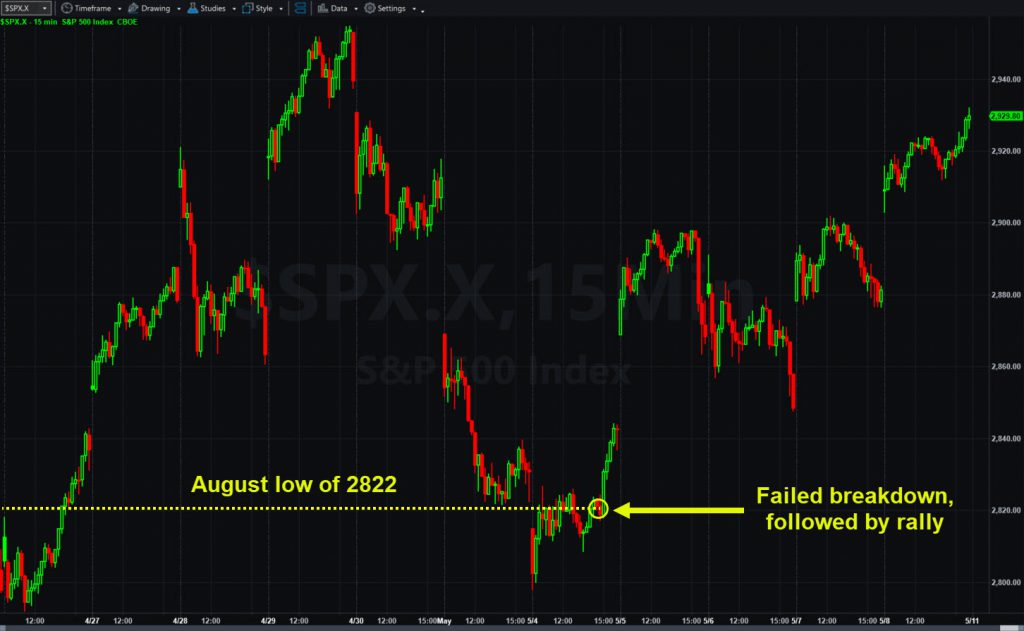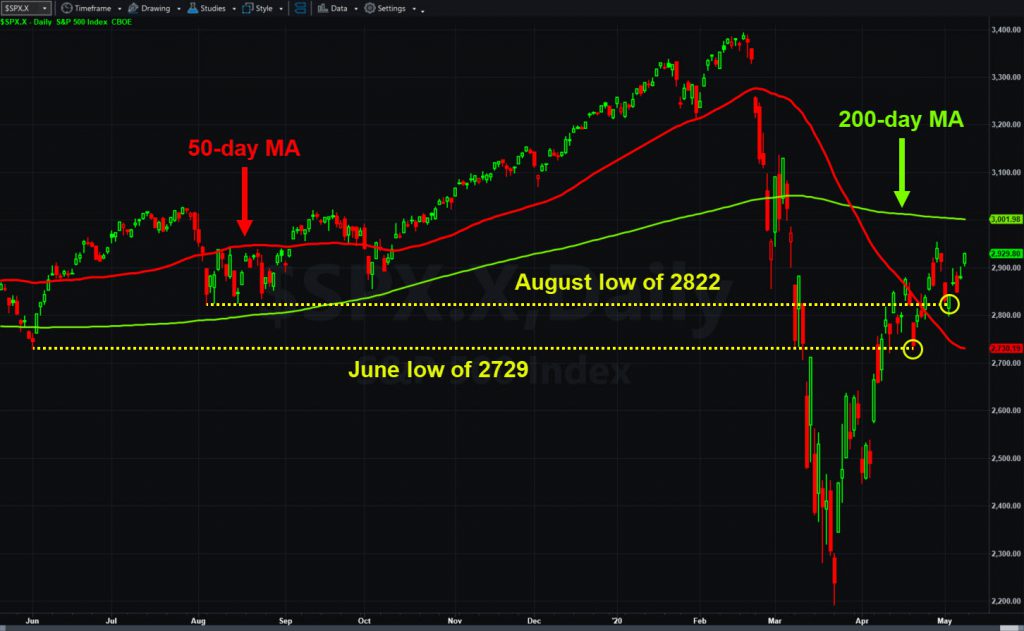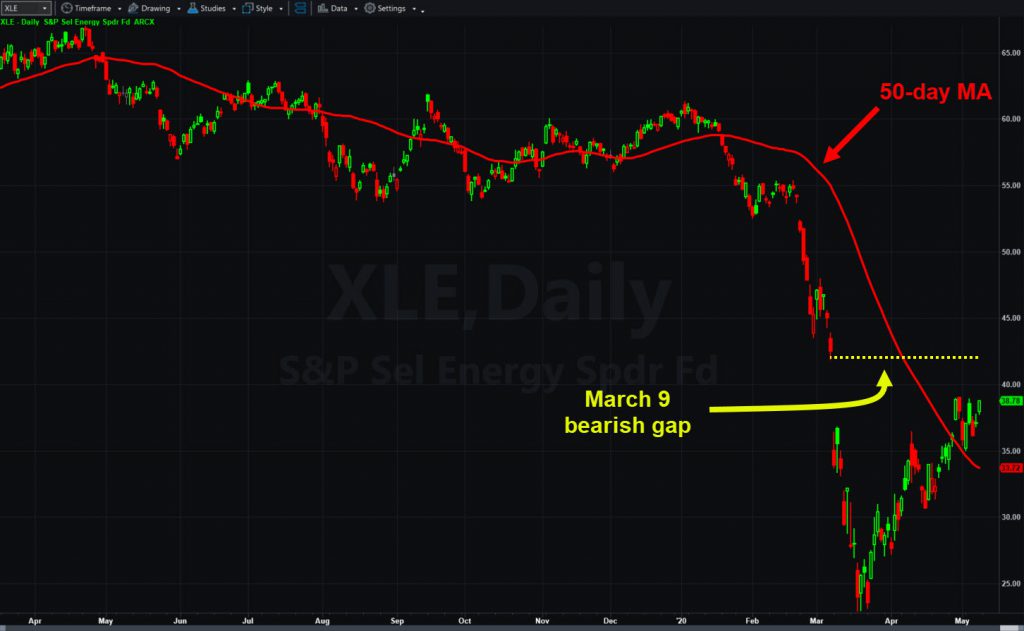Stocks rallied last week on signs of the coronavirus crisis winding down.
The S&P 500 began on a weak footing but held a key level from last summer. The index then turned higher and ended up 3.5 percent, its first positive week in the last three. More than four-fifths of its member stocks advanced.
The Nasdaq-100 was even more impressive, climbing almost 6 percent. The technology-heavy index now is now positive in 2020, while the other key indexes are still red on a year-to-date basis.

What’s going on? Why were markets so resilient despite the worst employment data in history? Let’s take a broader look at some bullish forces beneath the surface.
Negativity Is Extremely High
The coronavirus pandemic completely wrecked sentiment. As Market Insights noted at the start of April, the American Association of Individual Investors showed the most dramatic streak of bearishness since March 2009. That negativity continued all the way through last week, with almost 54 percent of investors expecting downside.
This poll can work as a contrary indicator because it reflects how many people are in cash. Money often flows back to equities as they get more bullish.
Meanwhile, Cboe’s Volatility Index ($VIX.X) has crumbled back to its lowest level since the first week of the correction. That suggests price action is calmer and potentially more favorable for stock-picking.

The Economy May Rebound
The U.S. lost more than 20 million jobs last month, according to both ADP and the Labor Department. Unemployment spiked to its highest levels since at least 1947. The Institute for Supply Management’s key manufacturing index also plunged to an 11-year low.
While horrible, these numbers were thoroughly expected because of social distancing. Now there may be reasons to be more optimistic as the global economy reopens:
- More than 70 percent of people out of work said the loss was temporary, according to the Labor Department.
- More than half of April’s job destruction occurred in hotels, restaurants, retail and health care (doctors’ offices/dentists). It’s also not hard to see most of those returning once people can go out in public again.
- China’s exports in April crushed estimates to the upside. That could be a sign of health for the global economy.
- The White House is resuming talks with lawmakers for more economic stimulus, according to both Treasury Secretary Steven Mnuchin and economic advisor Larry Kudlow.
| | |
| Fortinet (FTNT) | +31% |
| IPG Photonics (IPGP) | +27% |
| PayPal (PYPL) | +20% |
| Phillips 66 (PSX) | +16% |
| News Corp. (NWS) | +16% |
Small Companies Are Rallying
Another reason for potential optimism is the internal price action in the market. Smaller companies are gaining, while “safe havens” like utilities and consumer staples are lagging.
Stocks including Shopify (SHOP), Twilio (TWLO), Mercadolibre (MELI), Square (SQ) and Wayfair (W) rallied sharply on earnings last week. In each case, the coronavirus crisis helped drive their Internet-based business models.
The Russell 2000 small cap index, whose members are viewed as highly sensitive to the domestic economy, also surged nearly 6 percent. Semiconductors, biotechnology, housing and solar-energy outperformed as well.
But perhaps most important: The energy sector ripped more than 8 percent as crude oil rebounded from April’s carnage. This brings us to the fourth key issue this week: crude oil and interest rates.
Oil and Interest Rates
Crude oil collapsed in April after travel restrictions created a glut of unused fuel. However the industry has responded by quickly slashing production.
Last week, the Baker Hughes rig count fell to 374 — the lowest in more than 80 years. This measure of domestic drilling is down 47 percent since the end of February. Crude-oil inventories also rose less than expected for the second straight week.
Interest rates could be one final thing to watch because the U.S. government is about to flood the market with $3 trillion of new debt.

“I think we will look back on this as the end of the bull market in bonds,” investing guru Jeremy Siegel told CNBC last Tuesday. Bond holders “are going to be paying for the battle against coronavirus.”
While that might sound negative, just the opposite could be true because the Federal Reserve has promised to keep short-term interest super-low. The result could be higher long-term rates and a steeper yield curve. That, in turn, may be bullish for banks and financials.
The Week Ahead
Some events this week focus attention on interest rates, especially inflation reports, Treasury auctions and jobless claims.
Marriott (MAR) reports earnings today. Normally a snooze, it could draw more attention than usual as investors (and economists) watch management’s guidance for reopening post-coronavirus.
| Westrock (WRK) | -12% |
| Leggett & Platt (LEG) | -12% |
| Norwegian Cruise Line (NCLH) | -10% |
| Xylem (XYL) | -9% |
| Vulcan Materials (VMC) | -9% |
Consumer prices are due tomorrow morning, and the Treasury Department issues 10-year notes in the afternoon. Producer prices follow on Wednesday, along with a 30-year bond auction. These four events could be important for longer-term interest rates.
Crude-oil inventories are also due Wednesday morning, and technology giant Cisco Systems (CSCO) issues results in the post-market.
Thursday features initial jobless claims, a key fast-moving measure of employment. If the job crisis is ending, we’ll see it here. Later that day the Treasury Department launches the new 20-year bond. Applied Materials (AMAT) reports earnings after the close.
Finally, the week ends with the New York Fed’s Empire regional manufacturing index and consumer sentiment. Both of these are up-to-date indicators covering the present month. Again, if a rebound has begun, these numbers may give a clue.


























